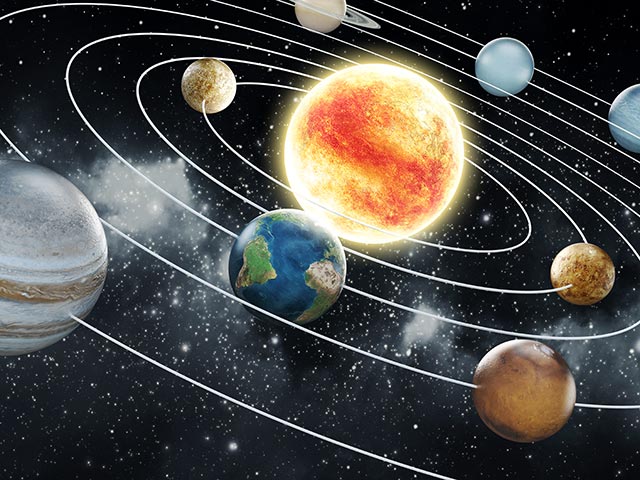
A study published in the Astrophysical Journal Letters discovered a pathway that explains how small celestial bodies called centaurs arrive from the outer solar system into Earth’s neighborhood.
The researchers said that a gateway region near Jupiter is causing centaurs to change their orbits. Once they pass through this region, most centaurs eventually join a group called the Jupiter-family comets – short-period comets that orbit the Sun every 20 years or less, located in the inner solar system just outside Jupiter.
The findings of the study could help improve astronomers’ understanding of comets and trace the comets’ history dating back to the formation of the solar system.
“What we discovered, the gateway model as a ‘cradle of comets,’ will change the way we think about the history of icy bodies,” said lead author Gal Sarid of the University of Central Florida.
Centaurs transition into Jupiter comets in gateway region
Centaurs orbit between Jupiter and Neptune. These orbits, however, are inherently unstable, leading astronomers to think of them as transitory objects that were scattered out of the Kuiper Belt. From this region, centaurs will either be ejected from the solar system or make the transition from Kuiper Belt objects to Jupiter-family comets.
But while astronomers agree on this aspect of a centaur’s origin, several questions remained unanswered. For one, astronomers are unable to agree on the pathway that centaurs take as they move closer to the Sun and the location of a possible transitional nexus. They have also debated on how Jupiter-family comets are replenished as these comets eventually fall apart after orbiting the Sun several times.
In the study, the researchers developed a model that simulated the pathway of centaurs. Their initial goal was to investigate the history of 29P/Schwassmann-Wachmann 1 (SW1), a peculiar mid-sized centaur in a nearly circular orbit just beyond Jupiter. SW1 is very active, with frequent explosive outbursts that occur at a point where ice should not effectively vaporize. For this reason, the researchers considered SW1 to be in an evolutionary middle ground between other centaurs and the Jupiter-family comets.
After comparing the orbital progression of SW1 to that of other centaurs, they found that many centaurs displayed the same characteristics as SW1: They originate in the outskirts of the solar system and move into an erratic orbit between Jupiter and Neptune. Then, they migrate to a gateway region somewhere near Jupiter. This gateway region, the researchers found, hosts centaurs that eventually would become Jupiter-family comets. It wraps around the inner solar system and contains many possible orbits within its thick ring.
“Centaurs passing through this region are the source of more than two-thirds of all [Jupiter-family comets], making this the primary gateway through which these comets are produced,” said co-author Maria Womack of the Florida Space Institute.
The team noted that the gateway does not hold resident objects for long as most centaurs become Jupiter-family comets within a few thousand years. Furthermore, the pathway of centaurs isn’t one-way; their models show that Jupiter-family comets can also travel away from the sun and move back into the gateway region.
“They can go back and forth like a revolving door,” explained Sarid.
The discovery of the gateway could help scientists identify centaurs that are on an imminent trajectory toward the inner solar system. Sw1 is a prime target for study as it is the largest and most active of the objects in the gateway region. (Related: Ancient stone carvings depict a massive comet strike 13,000 years ago that nearly made humans extinct.)
The researchers said that investigating centaurs such as SW1 could provide crucial insights into the origin of comets. As the icy leftover from the formation of the solar system, comets are intimately linked to the evolution of conditions that led to the creation of life.
Cosmic.news has more on interesting discoveries about the various cosmic objects within our solar system.
Sources include:
Please contact us for more information.













